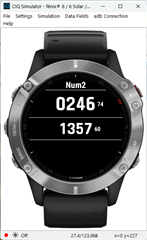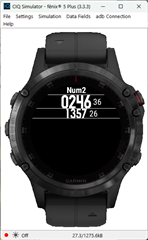I'm using a simpledatafield to display different values/units, switching each second.
I recognized that in some cases values are rendered with a big and bold font, while others are shown in smaller size - while the width is the nearly identical.
Example:
"75%" or just "0" is rendered big and bold"
"0W" is rendered small
In all cases my compute function is returning the value as String.
Is there any information available on formatting/rendering logic of simpledatafield?




